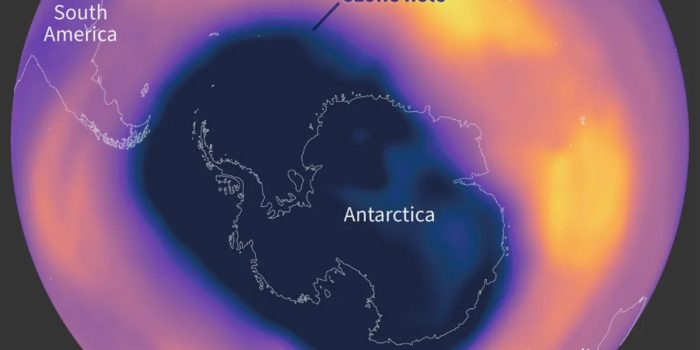Fresh insights from the University of Otago have injected uncertainty into the previously optimistic outlook on the recovery of the ozone hole. Examining trends from 2004 to 2022, researchers revealed a surprising expansion of the ozone hole over the past four years, prompting concerns about a potential deviation from the expected recovery trajectory.
“This means that the hole is not only larger in area, but also deeper throughout most of spring,” Hannah Kessenich, lead study author and PhD candidate in the University of Otago’s Department of Physics, said in a statement.

The ozone hole, a vital stratospheric layer shielding Earth from harmful ultraviolet rays, initially garnered attention in the 1970s and 1980s due to its association with chlorofluorocarbons (CFCs). Despite the successful global efforts to phase out CFCs, a recent study suggests that climate change may be emerging as a new contributor to ozone depletion, raising the specter of setbacks in the recovery process.
However, dissenting voices within the scientific community question the study’s implications. Some argue that the ozone hole’s fluctuations are influenced by a myriad of factors not fully considered in the analysis. The eruption of the Hunga Tonga-Hunga Ha’apai in January 2022, which released a significant amount of water vapor into the atmosphere, is cited as an example of an event that may have skewed the data. Critics emphasize that isolated incidents like this can distort the overall trend and caution against prematurely concluding a departure from the recovery path.
This divergence of opinions highlights a schism within the scientific community regarding the ozone hole’s future. While some researchers express apprehension about the potential impact of climate change on ozone depletion, others maintain confidence in the ongoing recovery. The intricate interplay of natural phenomena, human activities, and climate change complicates the drawing of definitive conclusions. As discussions persist, further research becomes imperative, necessitating a nuanced understanding of the multifaceted factors at play.

This comprehensive approach is crucial for accurately assessing the true status of the ozone layer’s recovery and navigating potential challenges on the horizon. As the scientific discourse unfolds, a collective effort is essential to decipher the intricate dynamics governing the ozone hole’s evolution and to inform strategies for safeguarding this critical stratospheric layer.
“I am not convinced of the results of the study,” Dr Martin Jucker, a lecturer at the University of New South Wales and Associate Investigator at the ARC Centre of Excellence for Climate Extremes, said in another statement.
“Their results rely heavily on the large ozone holes we have seen in 2020-2022. However, existing literature has already found reasons for these large ozone holes: Smoke from the 2019 bushfires and a volcanic eruption (La Soufriere), as well as a general relationship between the polar stratosphere and El Niño Southern Oscillation: We know that during la Niña years, the polar vortex in the stratosphere tends to be stronger and colder than usual, which means that ozone concentrations will also be lower during those years. The years 2020-22 have seen a rare triple La Niña, but this relationship is never mentioned in the study,” Dr Jucker explained.


